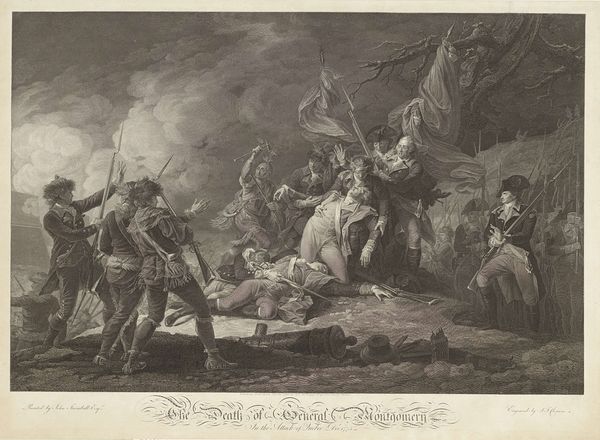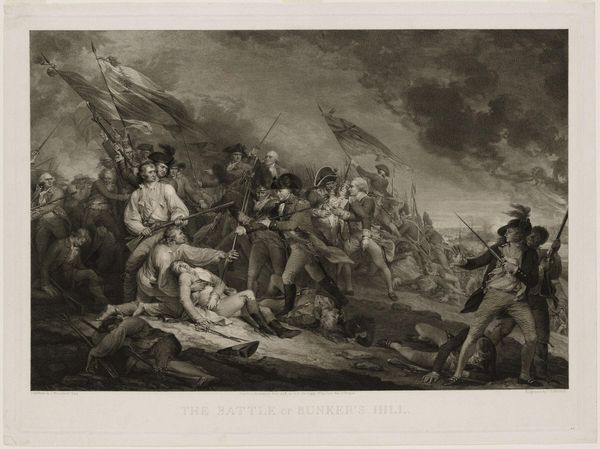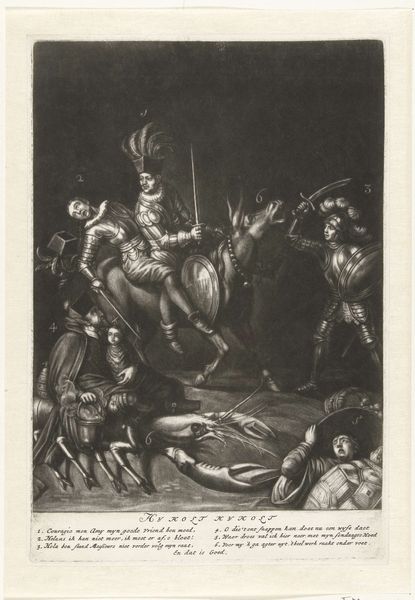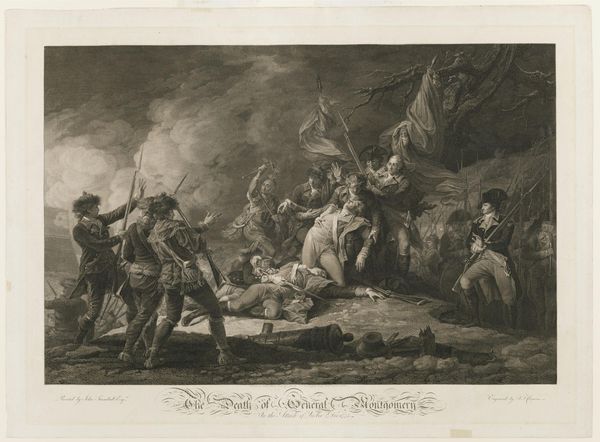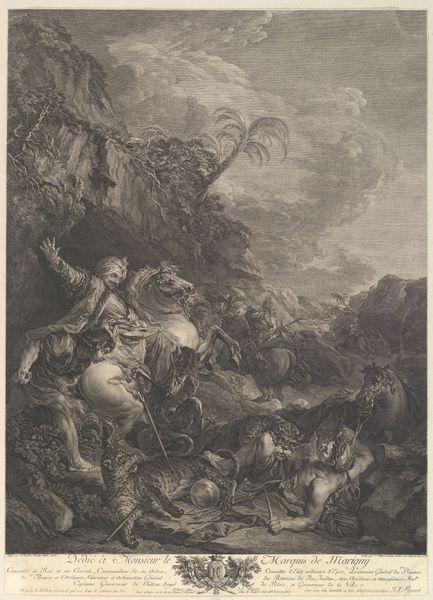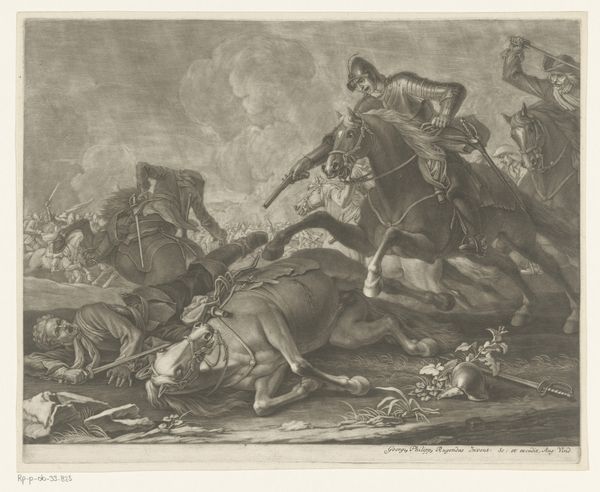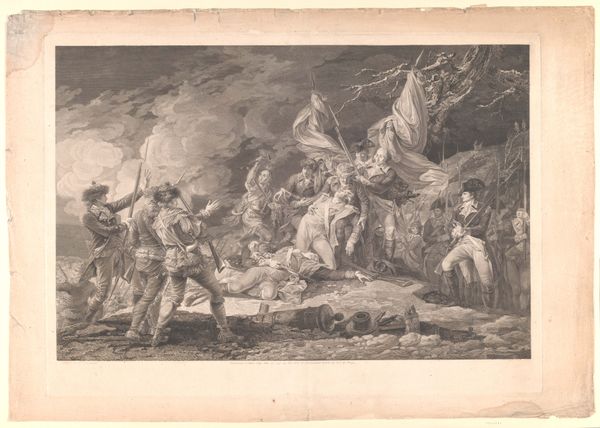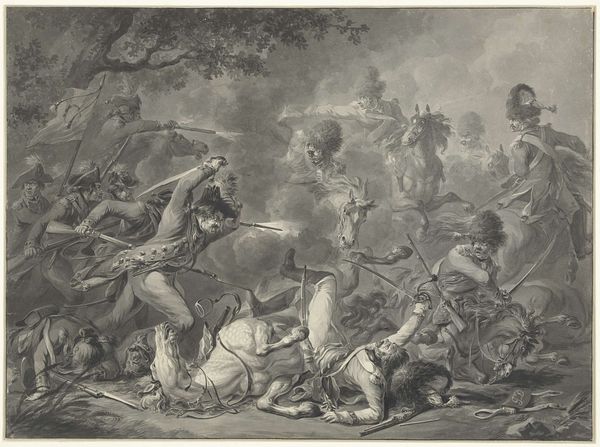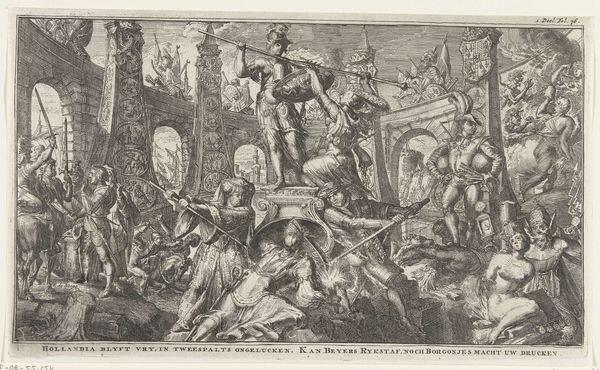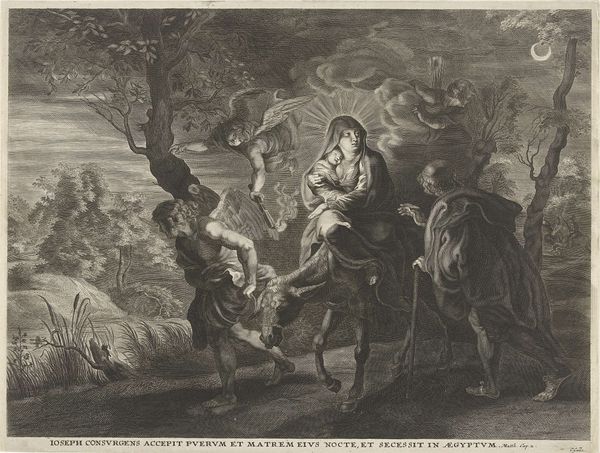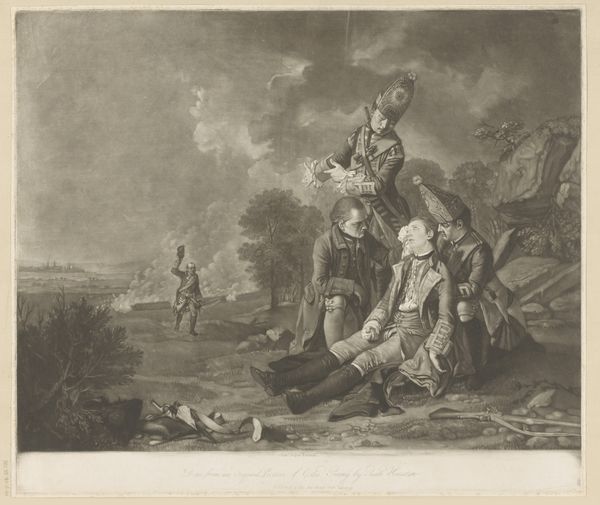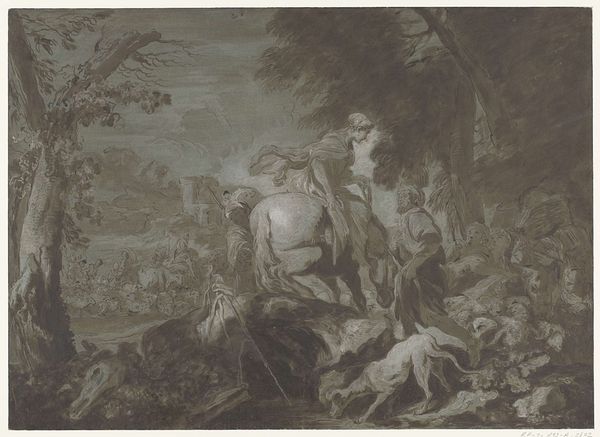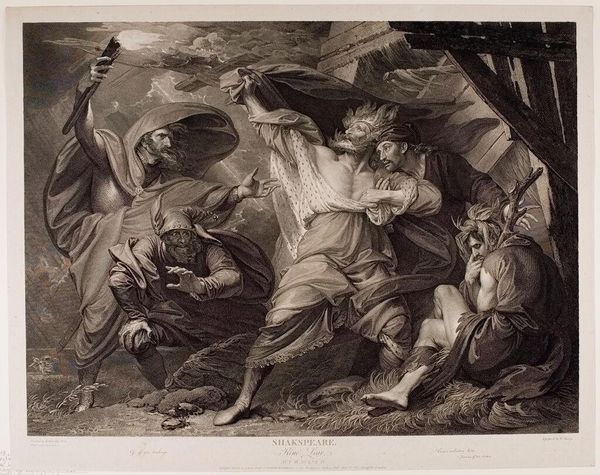
The Calydonian Boar Hunt, from the Houghton Gallery 1781
0:00
0:00
Dimensions: 468 × 856 mm (image); 505 × 856 mm (sheet, cut within platemark)
Copyright: Public Domain
Editor: Here we have Richard Earlom's "The Calydonian Boar Hunt," a print from 1781 currently residing at the Art Institute of Chicago. The contrast between light and shadow is striking, creating a real sense of drama and depth. What do you see in this piece? Curator: From a materialist perspective, I'm immediately drawn to the engraving process itself. Think about the labor involved in creating this print, the skill of the engraver meticulously translating the original drawing onto a copper plate. It democratized images for wider consumption. This wasn’t just about representing a scene; it was about reproducing it, circulating it within a specific social context. Do you consider this piece “high art?” Or something else? Editor: I guess I always thought of prints as…lesser, somehow? Maybe because they're reproducible. So, this would have been something that many people could afford? Curator: Exactly. It challenges our conventional ideas about artistic value, which often privilege unique, handmade objects. Instead, we must consider this artwork within the burgeoning print market of the 18th century. It was a commodity, a product of skilled labor meant for a consuming public. How does understanding its status as a manufactured object change how we perceive the image itself? Editor: That’s a fascinating way to look at it! I suppose I was focusing on the scene depicted. But considering it as an object, mass-produced using engraving techniques changes the entire perspective. Curator: The ‘how’ matters just as much as the ‘what.’ By focusing on the materials, the production, and the market, we gain a more grounded understanding of its role within 18th-century culture. Editor: I hadn't considered the material implications before. I will definitely look at prints differently moving forward. Curator: Paying attention to these kinds of questions expands the realm of artistic practice, making it a subject of vibrant conversations.
Comments
No comments
Be the first to comment and join the conversation on the ultimate creative platform.
